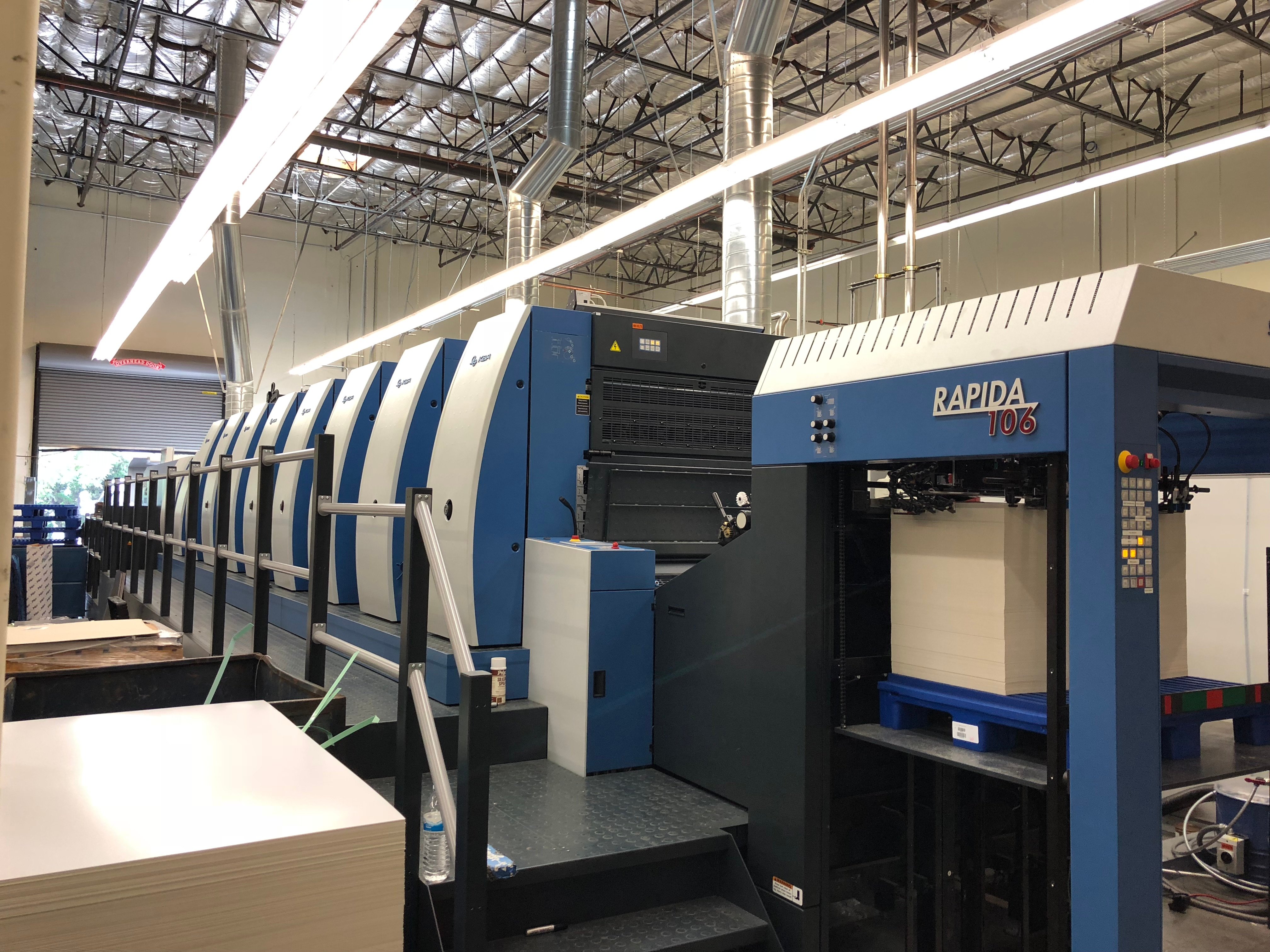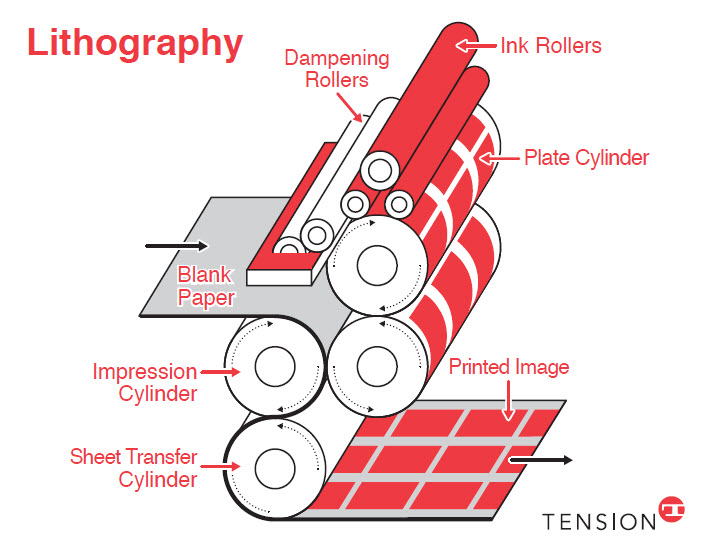Top-Tier litho printing Services for Exceptional Results
Top-Tier litho printing Services for Exceptional Results
Blog Article
A Comprehensive Overview to Comprehending Litho Printing Techniques
The world of litho printing, a method originating from the late 18th century, is a fascinating blend of history, art, science and technology. This thorough overview will unwind the complexities of this printing approach, from the make-up of litho inks to the difficulties dealt with in contemporary applications. As we venture into the ins and outs of lithography, the importance of automation and sustainability in guaranteeing its future significance comes to be increasingly clear. Stick with us as we trip into the exciting realm of litho printing.
The Historic Advancement of Litho Printing
The historic trajectory of litho printing, an essential technology in the world of interaction, is a captivating tale of human resourcefulness. Birthed in the late 18th century by Alois Senefelder, this strategy was initially an affordable approach of publishing theatrical works. Lithography, derived from the Greek words for 'rock' and 'to compose', made use of a smooth rock surface area to move photos onto paper. The process advanced with the advent of the rotating press, which greatly boosted efficiency (litho printing). In the 20th century, the advancement of countered lithography changed the industry, enabling mass manufacturing of premium prints. Each stage of litho printing's development showcases humanity's ruthless search of effectiveness and quality in visual interaction.
Deciphering the Scientific Research Behind Litho Printing Inks
Moving on in the exploration of litho printing methods, the focus currently shifts to the scientific research behind litho printing inks. The structure of these inks, their drying out procedure, and shade mixing techniques form the foundation of this complex art type. Understanding these aspects is critical to mastering the craft and accomplishing the preferred print results.
Make-up of Litho Inks
In lithographic printing, the basic function of litho inks can not be overemphasized. The composition of litho inks differs depending on its function, however generally, they contain two major parts - pigments and vehicles. Pigments, the color-providing aspects, are finely ground fragments put on hold in the lorry, a fluid that brings the pigment onto the printing surface. The vehicle is an intricate blend of solvents, materials, and oils, which affect the ink's drying time, bond, and gloss. Furthermore, different ingredients exist to enhance specific buildings like circulation, drying, and resistance to environmental results. Each component plays a crucial component in the last print's quality, making the precise formulation of litho inks an elaborate scientific research.
Ink Drying Refine
From the make-up of litho inks, interest transforms to the fascinating procedure of ink drying out. 2 main techniques are made use of in litho printing: oxidative drying and absorption. Absorption, on the other hand, involves the ink seeping into the paper fibers, which is a much faster procedure yet can lead to much less vivid shades.
Color Mixing Methods
While the drying procedure plays a key duty in litho printing, the science of shade mixing strategies holds equal relevance. This is a complicated process that includes the cautious mixing of primaries: cyan, magenta, and yellow, in differing percentages to attain a wide array of tones. The addition of black ink, referred to as 'essential', helps in regulating the strength and deepness of the shades. The scientific research behind litho printing inks also considers the openness of the ink, which influences how colors overlay and mix. To attain an effective shade mix, print experts need to also recognize the ins my latest blog post and outs of ink habits, shade concept, and the physical properties of the substratum on which the ink is used.
The Art and Design Elements in Litho Printing
Litho printing breathes life into art and design through its one-of-a-kind aspects. Litho printing accommodates a selection of colors, making it possible for musicians to create dynamic and dynamic prints. This mix of precision and adaptability makes litho printing a recommended choice for lots of musicians and designers.
Modern Applications of Litho Printing Techniques
Litho printing methods have actually found substantial use in the modern-day commercial field. Its influence and relevance remain to grow with the advent of brand-new developments and modern technologies in the area. This section will explore these contemporary applications and the transformative duty they play in the printing industry.
Business Litho Printing Makes Use Of
In today's digital age, one could ask yourself about the importance of conventional printing methods. Yet, look here litho printing continues to be an important component of the commercial sector. High-volume printing jobs, such as the production of publications, papers, and packaging, depend on litho printing for its ability to provide superior image top quality and cost efficiency. The procedure, which entails moving a tattooed image from a plate onto a rubber blanket and after that to the printing surface area, uses unparalleled uniformity. This makes it excellent for tasks calling for a big print run. Litho printing also supplies a wide color spectrum, superior to that of electronic printing. This makes it the best selection for projects that require dynamic, top quality shade recreation.
Advancements in Litho Printing
Pressing the borders of traditional methods, contemporary developments have sustained a host of advancements in litho printing. These breakthroughs have not only improved the top quality and performance of litho prints yet additionally broadened its application range. One prominent growth is digital litho printing, which incorporates the virtues of digital technology with litho's high-quality result. This hybrid design uses faster setup times, decreased waste, investigate this site and enables on-demand printing. Another notable improvement is the introduction of environmentally pleasant inks. These inks, made from veggie or soy-based services, have actually considerably lowered the market's environmental impact. litho printing. In addition, the development of sophisticated plate modern technology has streamlined the printing process, resulting in sharper pictures and improved shade integrity. These technologies underscore the enduring relevance of litho printing in the modern-day world.
Checking out the Process of Litho Printing: Detailed

Obstacles and Solutions in Contemporary Litho Printing

Despite the accuracy and custom that litho printing happily maintains, it is not without its collection of modern obstacles. One of the most prevalent concerns include the high first setup price, problem in printing variable data, and environmental worries due to chemical use. However, solutions are emerging as technology evolves. Digital litho printing permits cost-efficient short runs and very easy customization, addressing the concern of variable data. Environmentally-friendly inks and more secure plate-making processes mitigate environmental issues. In addition, developments in automation have actually lowered labor costs, even more democratizing the lithography process. Hence, while there are difficulties, the litho printing sector is proactively adapting to fulfill them head-on, ensuring its relevance in the future.
Conclusion
To conclude, litho printing, with its abundant background and clinical details, holds a significant area in the print sector. As the guide discloses, it's a synthesis of art and modern technology, with contemporary advancements guaranteeing its importance. The market deals with challenges that need innovative remedies, with an emphasis on automation and sustainability. The future of litho printing depends upon its capacity to adapt to these transforming needs, attesting its long-lasting worth in an advancing market.

Report this page